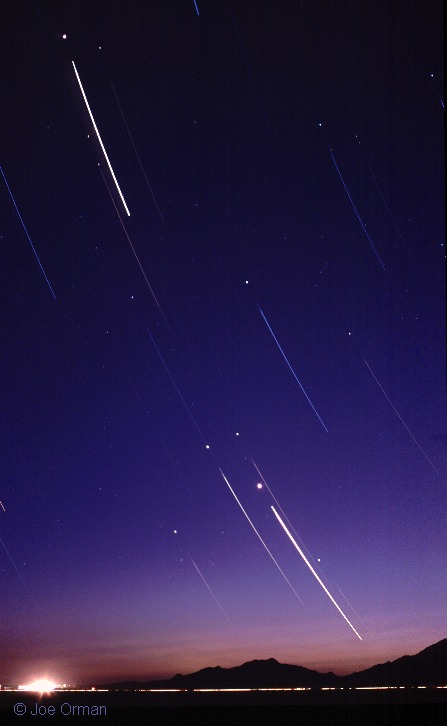
|
Credit: Joe Orman
Explanation:
Positioning his camera and tripod on
planet Earth,
near Maricopa, Arizona, USA,
astrophotographer
Joe Orman created this trailing display of the ongoing
sky-full-of-planets
on May 3rd.
He initially captured the grouping in a 20 second
long time exposure
recording the positions of the bright planets and stars.
Covering the camera lens for five minutes, he then exposed the same
frame for 45 minutes,
tracing the gentle arcs of the celestial
wanderers
as the Earth's rotation carried them toward the western
horizon.
Of course these planets,
Mercury,
Venus,
Mars,
Jupiter, and
Saturn all
still dazzle
in western skies near sunset,
but sky gazers who want to see Mercury should look soon.
Mercury starts the evening closest to the horizon -
visible here
above the wide bright trail left by Venus - and in the coming days
Mercury will be the first to leave the evening sky entirely as it moves
closer to the setting Sun.
Tonight Venus and Mars
will appear very close
together, separated by only one third of a degree.
|
January February March April May June July August September October November December |
| ||||||||||||||||||||||||||||||||||||||||||||||||
NASA Web Site Statements, Warnings, and Disclaimers
NASA Official: Jay Norris. Specific rights apply.
A service of: LHEA at NASA / GSFC
& Michigan Tech. U.
Based on Astronomy Picture
Of the Day
Publications with keywords: planets - conjunction
Publications with words: planets - conjunction
See also:
